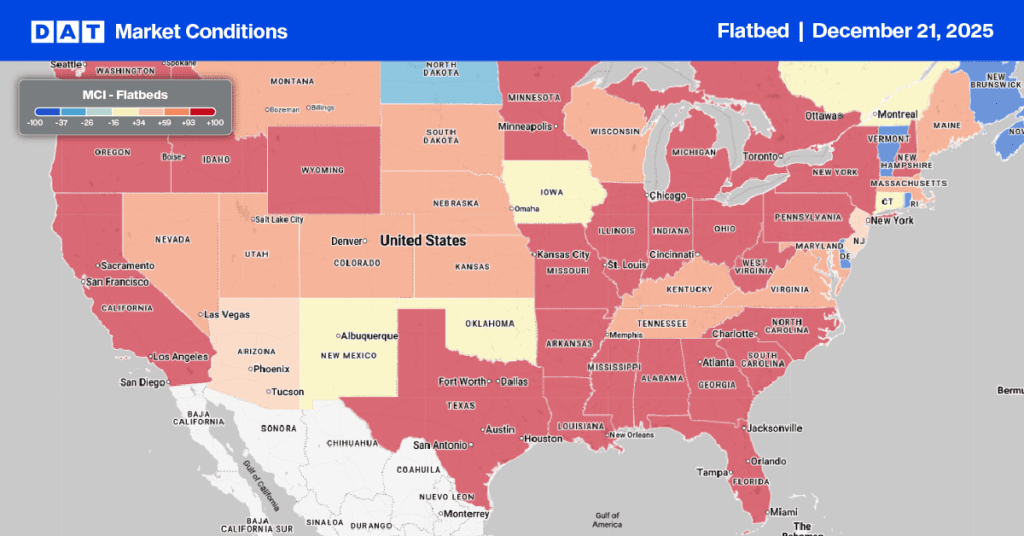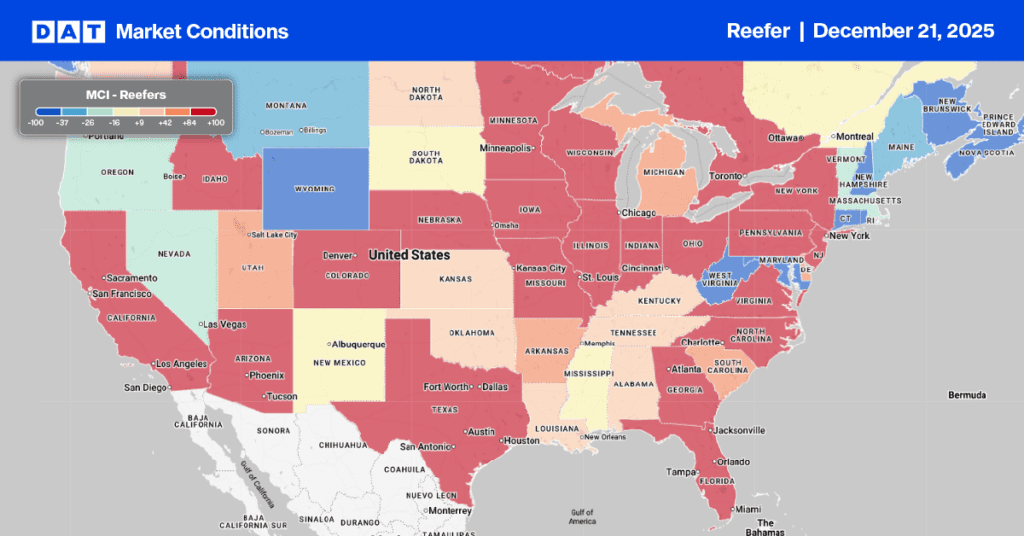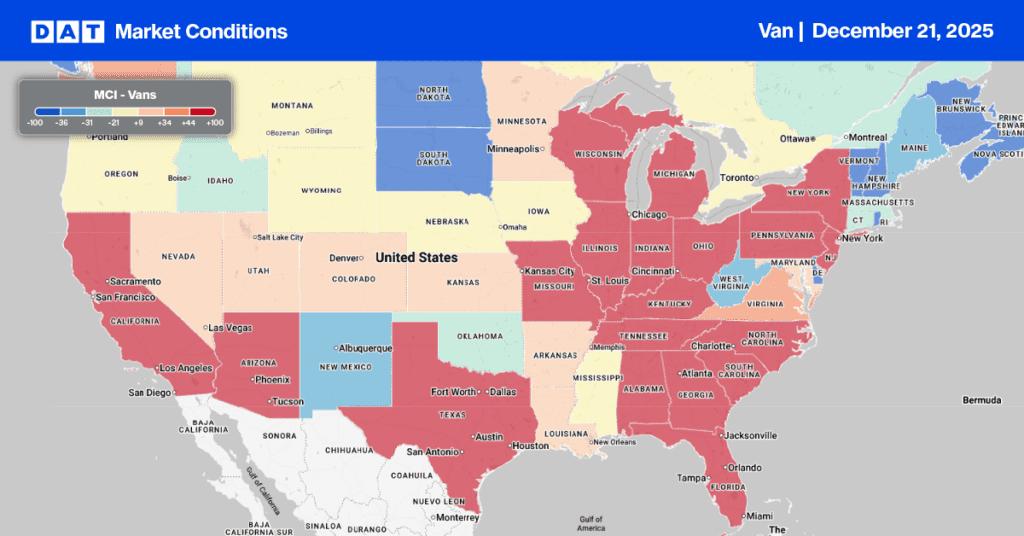On a recent FreightVine podcast hosted by Prof. Chris Caplice, Senior Editor at the Journal of Commerce (JOC), Ari Ashe discussed the intermodal industry, including the drayage sector, where complex alliances, legal rulings, and a shortage of chassis trailers have plagued the sector for decades. Here’s an excerpt from the interview.
Chris Caplice (CC): Demand for intermodal was flat in 2022 and the non-existent peak season. What do you think’s going on?
Ari Ashe (AA): I recently wrote up a story about J.B. Hunts’ earnings. When we looked at the intermodal Association of North America’s domestic intermodal number comparing June to October, that’s supposed to be the peak season of intermodal; it’s supposed to grow during those five months. Compared to 2020, volume was up roughly 14% and five-plus percent in 2021. And then last year, in 22, it was up six-hundredths of 1%. If you look at it per workday, intermodal volumes peaked in March and not October.
My answer to the question of why that happened. I think you have to split up between international (20′, 40′ & 45″ containers) and domestic (53′ containers), with the leading cause on the international import side. Slowing imports and continued frustration on the part of shippers with an unreliable rail network, shippers decided competitive truck rates were a better option.
CC: Here at DAT iQ, shippers hesitate more to use intermodal. Is anything else causing this, and do you see that abating anytime soon?
AA: Shippers are rightly skeptical. J.B. Hunt Vice President of intermodal Darren Field said there would be a lag between improving service metrics and shippers gaining that confidence. And his opinion, J.B. Hunt will be speaking to BNSF Railway and saying they still need to prove it over a sustained period before we buy in and bring those loads back from trucking.
CC: At MIT, we wrote a paper called Elephants or Goldfish a couple of years ago. And the whole idea was our shippers have the memory of an elephant compared to carriers, who were more like goldfish. Is it a memory issue?
AA: No matter what industry you’re in, you either slash jobs or right-size, or you trim your expenses, where you can get through the lean times. Railroads were historically the same when they furloughed engineers, conductors, and other frontline jobs during weaker economic times in 2020. But the problem is you can’t flip the switch and then have that instantly turn around when the times pick up and have that service become good, which is why you have that experience once every three years. We must stop overreacting to economic downturns and cut so much that we need more flexibility to turn that switch on once conditions improve quickly.
CC: Let me ask you another question about why shippers might be hesitant to use intermodal rail based on the threat of a rail strike last Fall. Was that a big issue early in the Fall, and do you think that’s still lingering with many shippers?
AA: It hurt volumes early in the Fall. Several shippers moved stuff to outside trucking companies in the days leading up to the threat last September or, in the case of J.B. Hunt, HUB, and Schneider, to their truckload divisions. The shipper, at this point, is in a wait-and-see mode to see what railroad hiring will look like over the next six months.
CC: Let me flip to ports. We noticed during the pandemic, there was a general shift in imports towards the East and Gulf Coast from West Coast ports. Why is it happening?
AA: It’s multipronged. First, the shift to the Gulf and East Coast was the response to 100-plus vessels anchored off Los Angeles. Then the second wave of people entered the Gulf and East Coast in response to the labor situation that’s still resolved with the ILWU union labor and management representing West Coast ports.
And back to your earlier memories of an elephant versus a goldfish in this area. Shippers have memories of an elephant and remember exactly what happened in 2014. Lastly, we’re seeing a third wave now: an inventory correction that will take six to nine months. Shippers don’t necessarily need the shortest transit from Shanghai to the West Coast and don’t mind that extra 27 to 30 days to get through the Panama Canal into the Gulf or East Coast ports. It buys them time to correct that inventory before new imports arrive.
CC: Where’s the dividing line for shipping imports to the West Coast before heading further inland versus routing to the East Coast?
AA: It depends on your location. Obviously, in places not served by the East Coast railroad, you would stay with the West Coast. If you’re going to draw that line, it would be from Chicago down to New Orleans. Any points west of that line would likely want to move through the West Coast and east of that, through the East Coast.
CC: What are the advantages for shippers routing imports to the East Coast?
AA: It would help if you considered the highway infrastructure more than anything else. While the Ports of Savannah and Virginia, plus others, are certainly making efforts to grow their intermodal on and off-dock business to move goods inland, there will always be more freight moving from the ports in the inland markets on trucks out of the East Coast. Take Savannah, for example. It’s right on Interstate 95 and other significant interstates making truckload an easy and quick option for shippers. If a shipper routes imports to the East Coast, they’re serving markets no more than 500 to 600 miles away.
CC: One thing that is a black box to some of our listeners is the idea of a shortage of container chassis. Can you explain what some of the root causes are?
AA: So this is a problem mainly in the international space. It does happen domestically, but I’ll explain why it’s more international than domestic. Let’s start with domestic, and the reason you don’t see it happen nearly as much in domestic is because J.B. Hunt and Schneider, for example, own their chassis trailers and trucks that haul their own 53′ containers.
That’s different from how it works in the international sector. There are these alliances that, without going too far back in history, ocean carriers used to control the chassis they owned 10 to 15 years ago before moving to third-party companies that worked with the ocean carriers to provide chassis trailers. The big three are Trac, DCLI, and FlexiVan, with contracts with ocean carriers to supply capacity. And so, to the extent that this international ocean carrier can get a great deal on that chassis, the trucking company needs the leverage to get that deal.
Unfortunately for carriers, this has created a situation where while there could be cheaper chassis on a per-day basis if the ocean carrier is locked into a deal with Trac Intermodal, for example, it means that trucker has to take that load on a Trac chassis. We’ve seen a lot of that happen over the last two years where truck drivers are being handcuffed into using a specific chassis because alliances with ocean carriers make it challenging to get some of those stranded containers out of rail terminals.
To combat this, the gray pool has emerged where any chassis should be able to be used for any container. Maintenance and safety of chassis trailers is another factor and why gray pools make so much sense. In contrast to ocean carrier chassis pools, whose on-road appearance is often questionable, having your name on the side of the chassis trailer keeps standards higher.
Ari writes more on this subject following a decision by the Federal Maritime Commission’s chief administrative judge in early February to resolve the long-running chassis usage dispute. It’s a win for truckers, but several important questions remain unanswered.
The full interview can be found here on the FreightVine Podcast.


